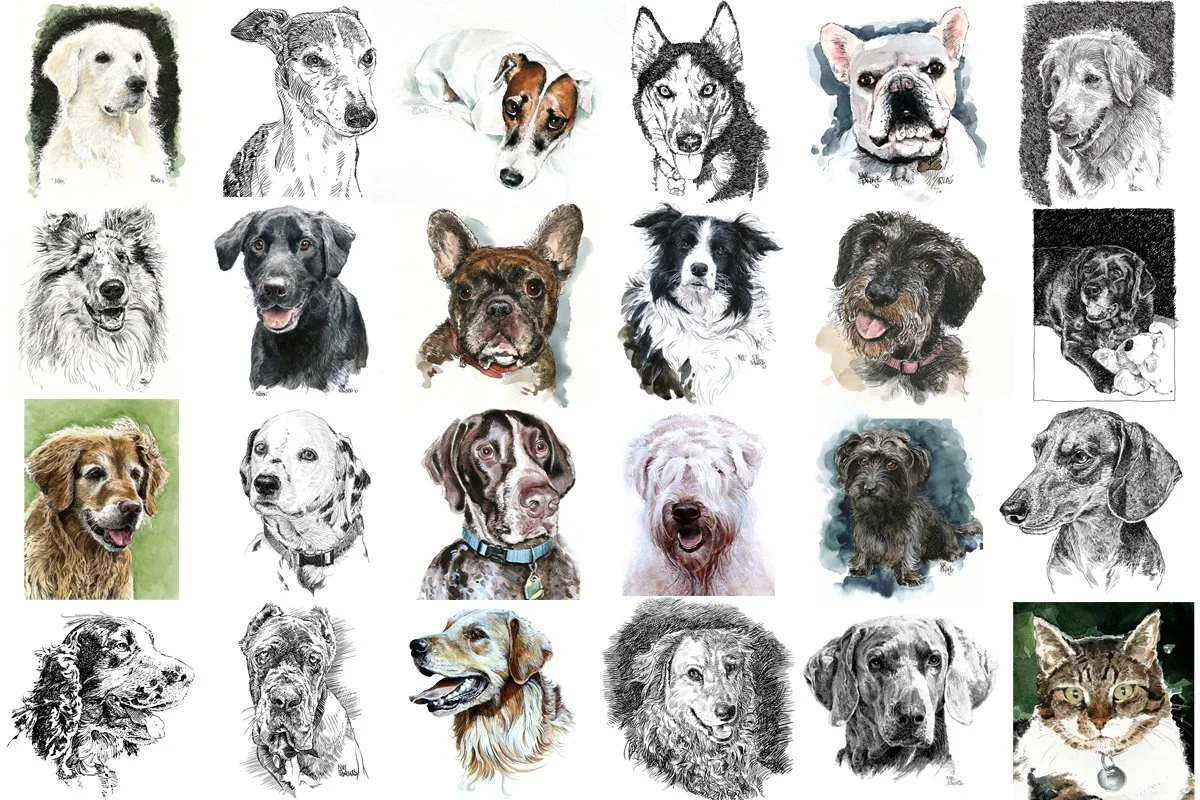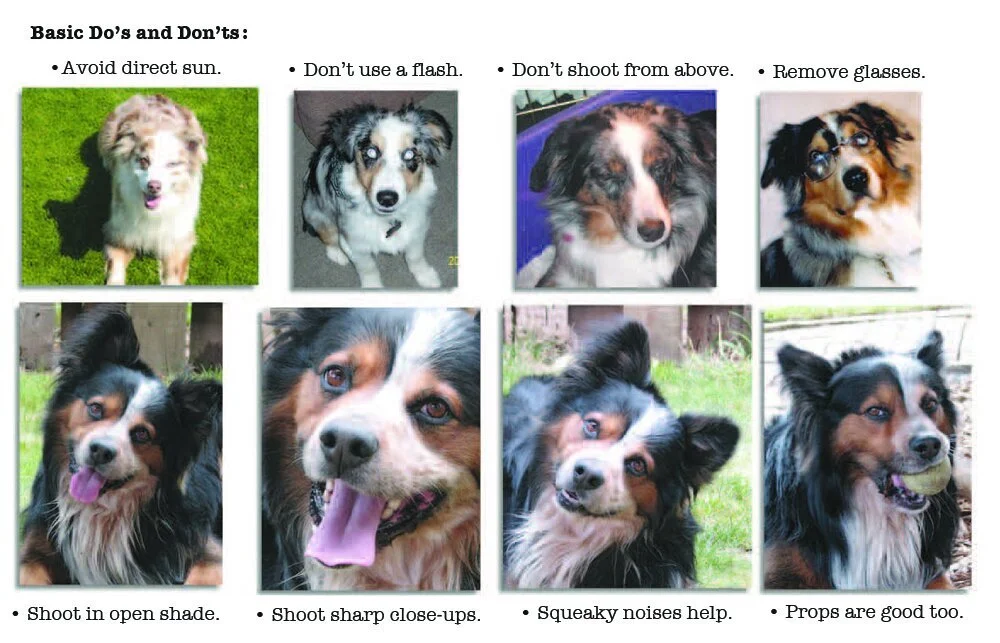Animal Portraiture
Custom Watercolors






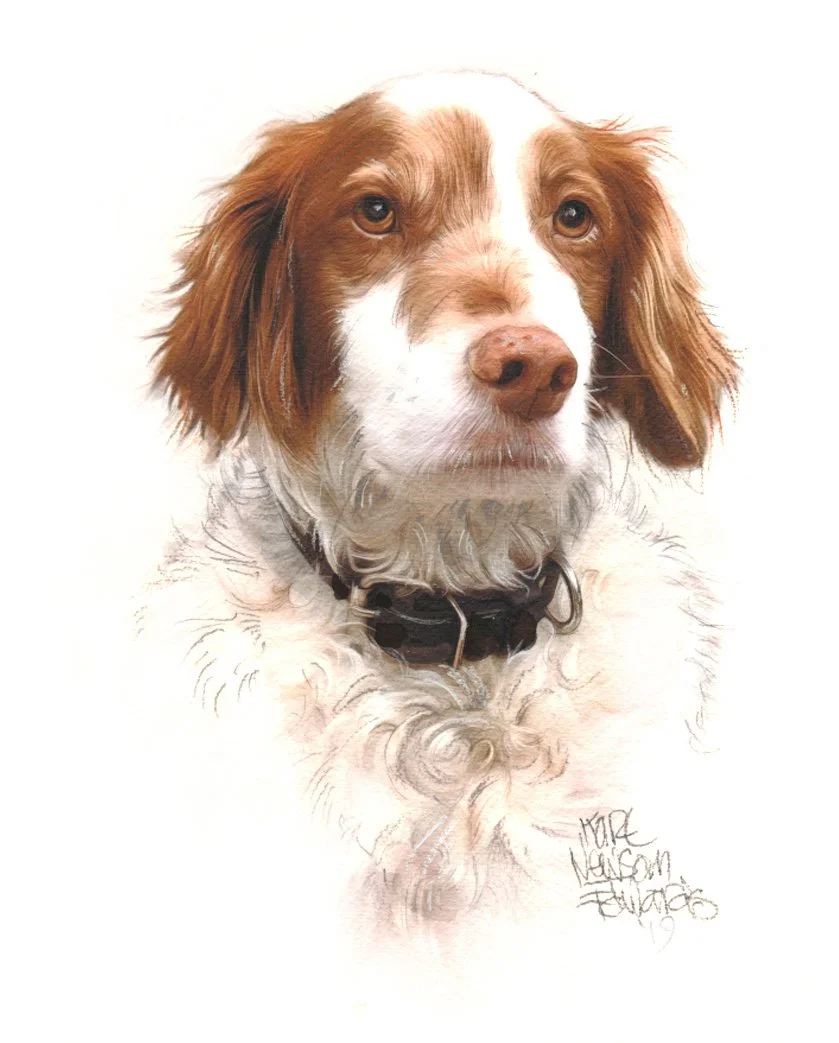

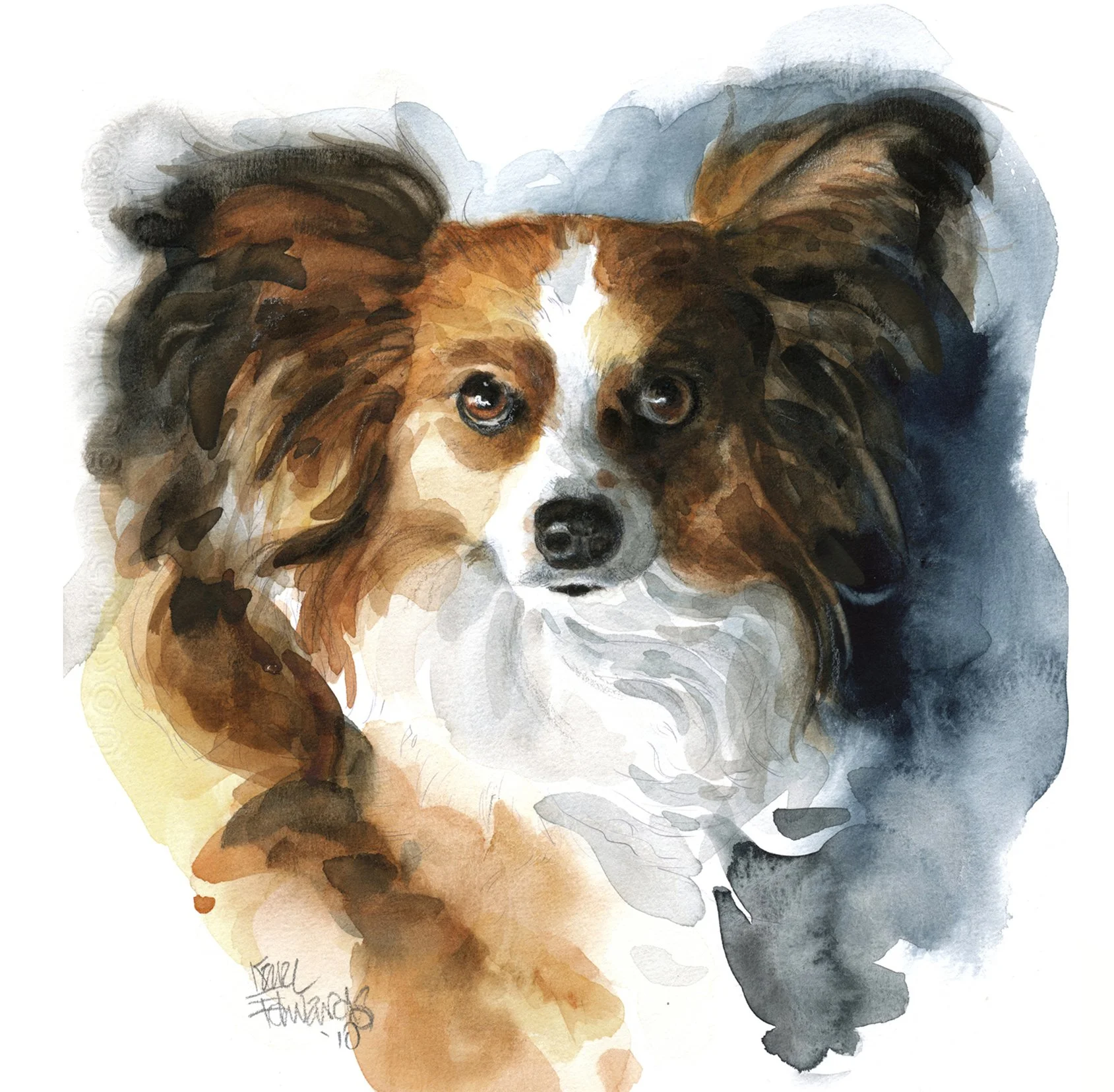

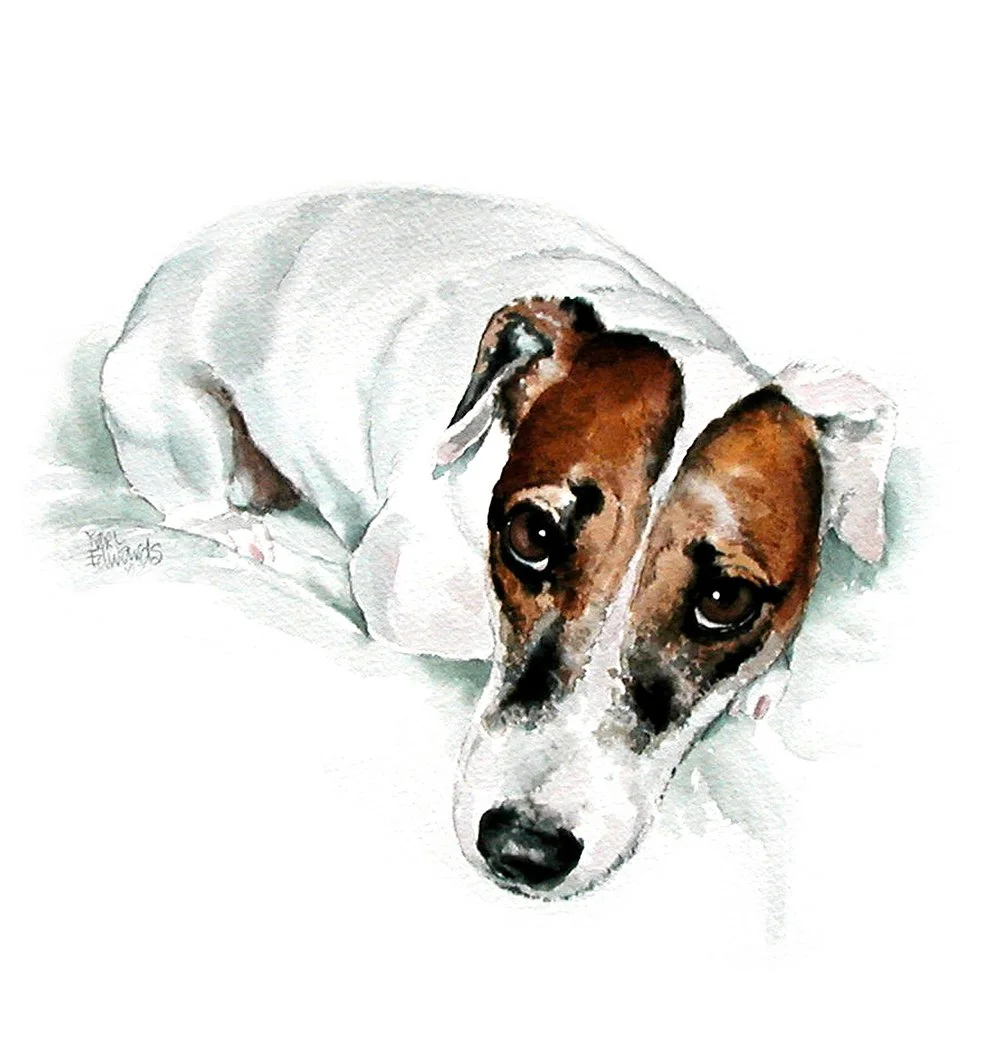

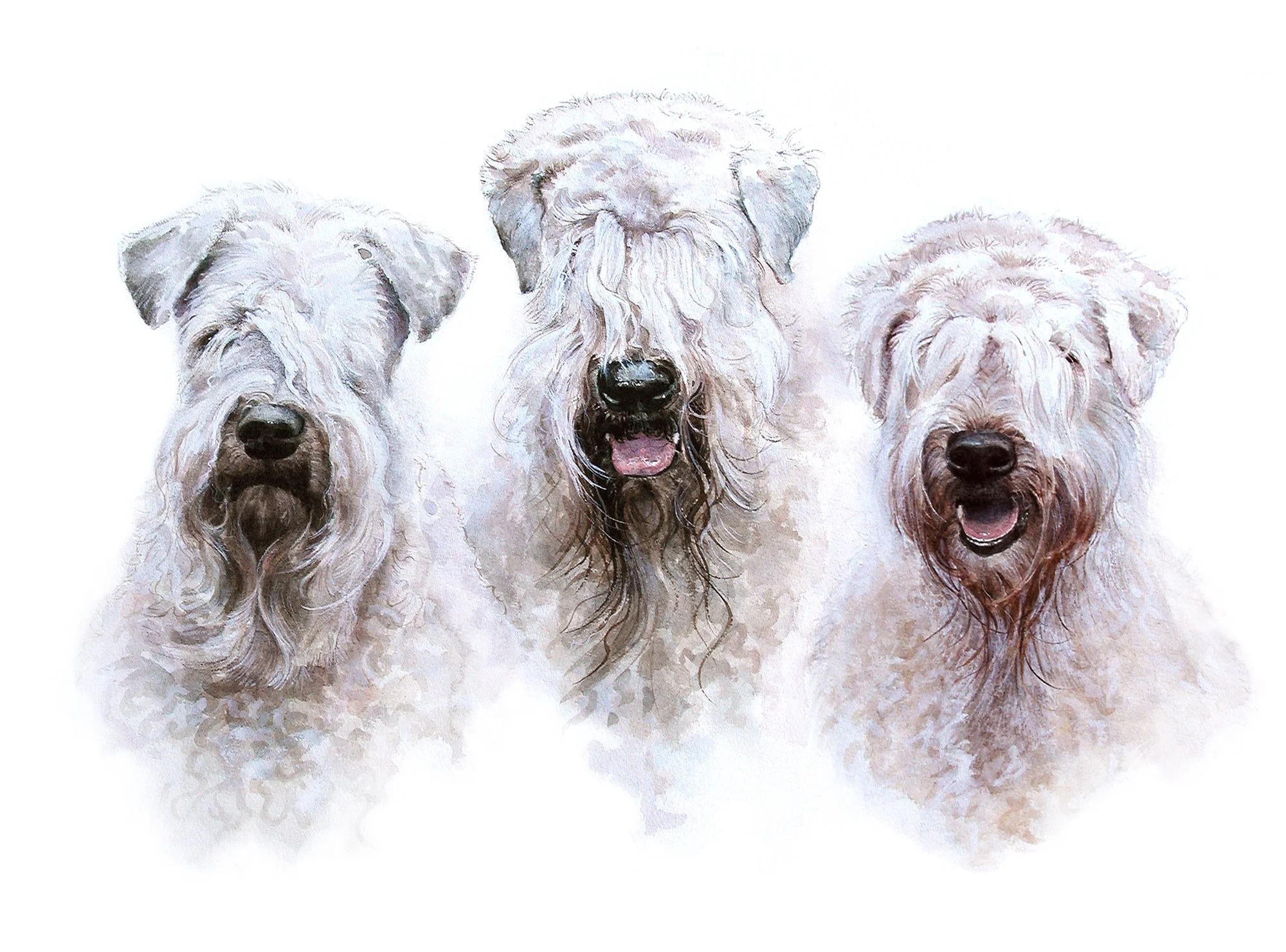


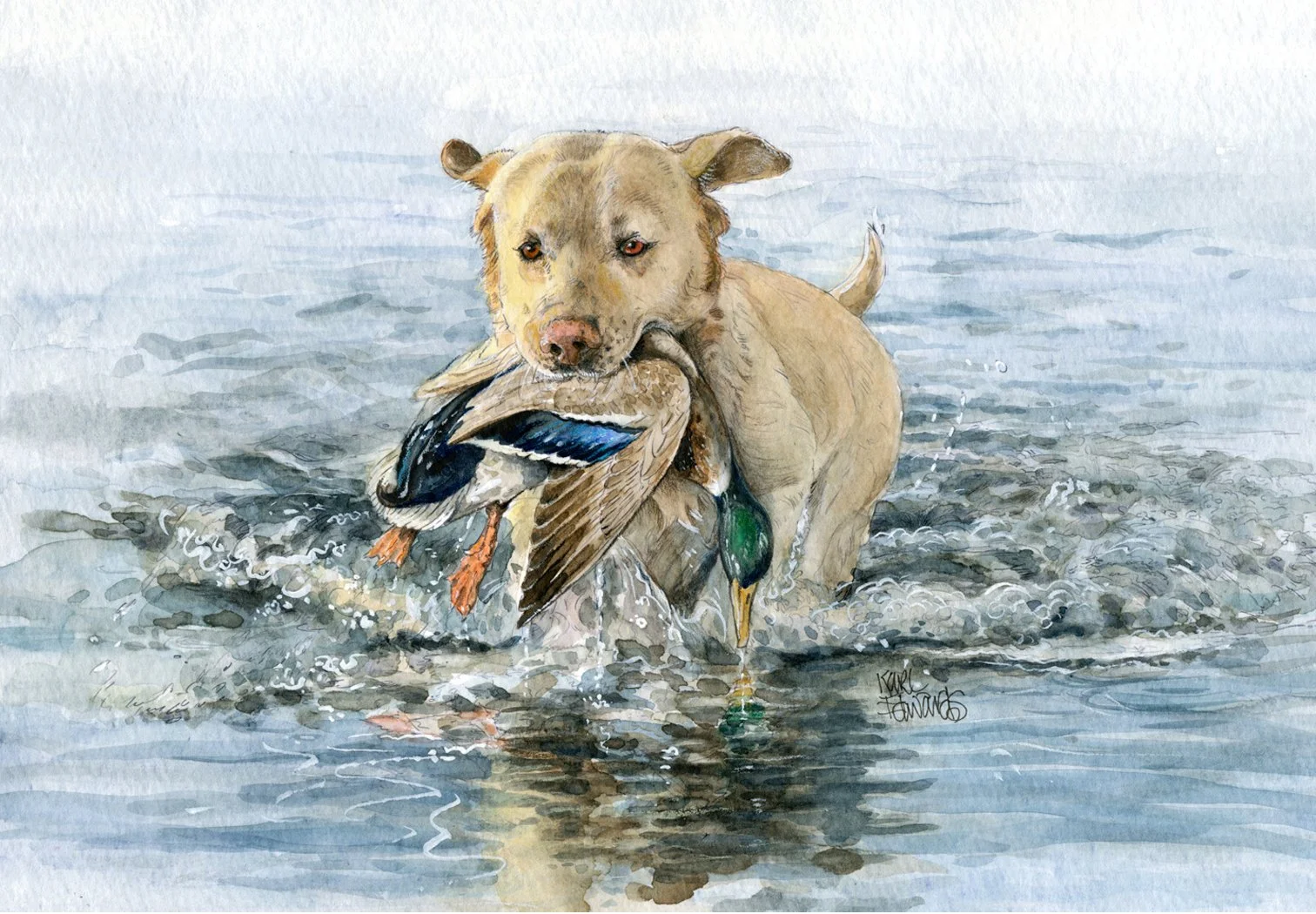





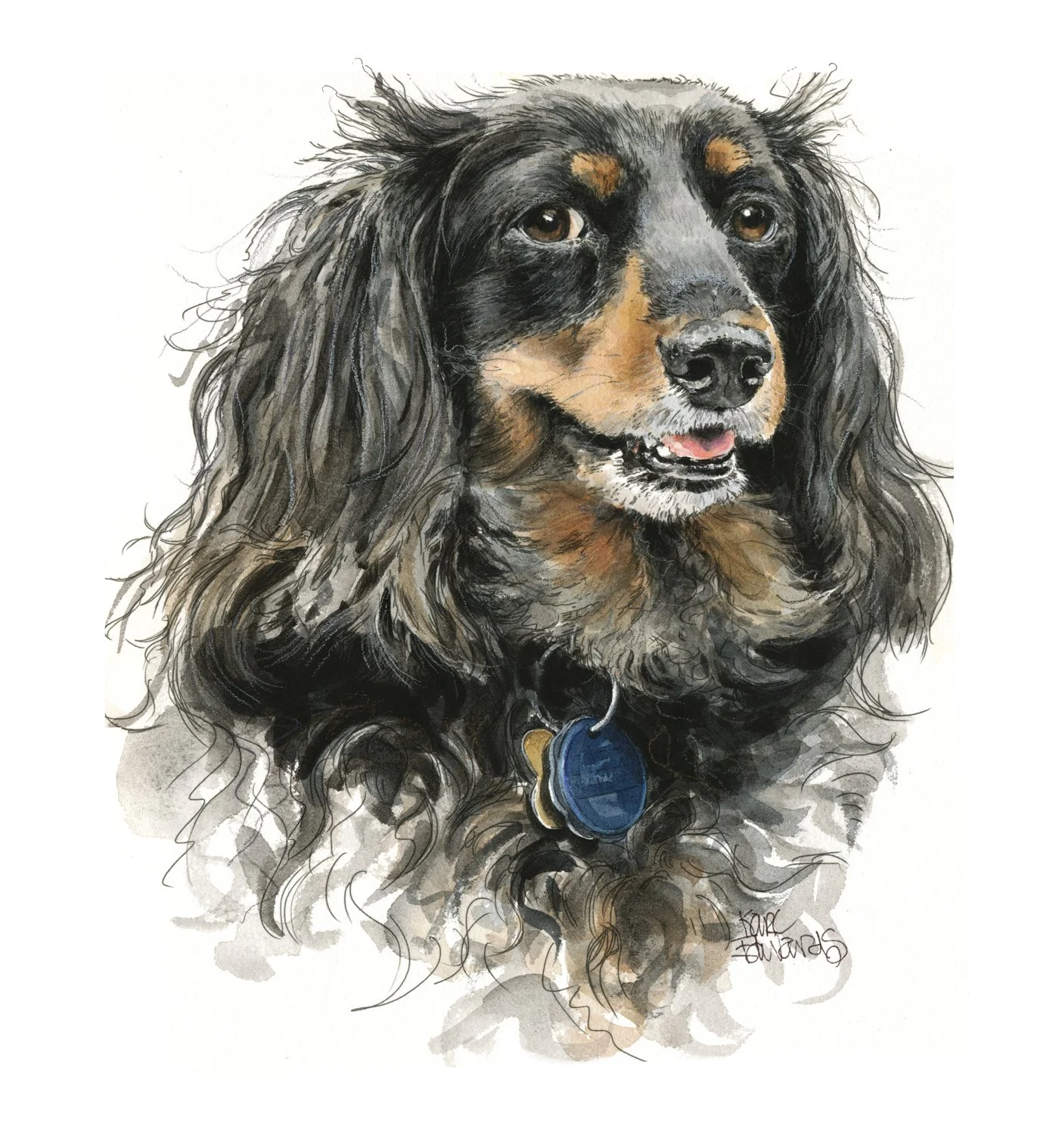

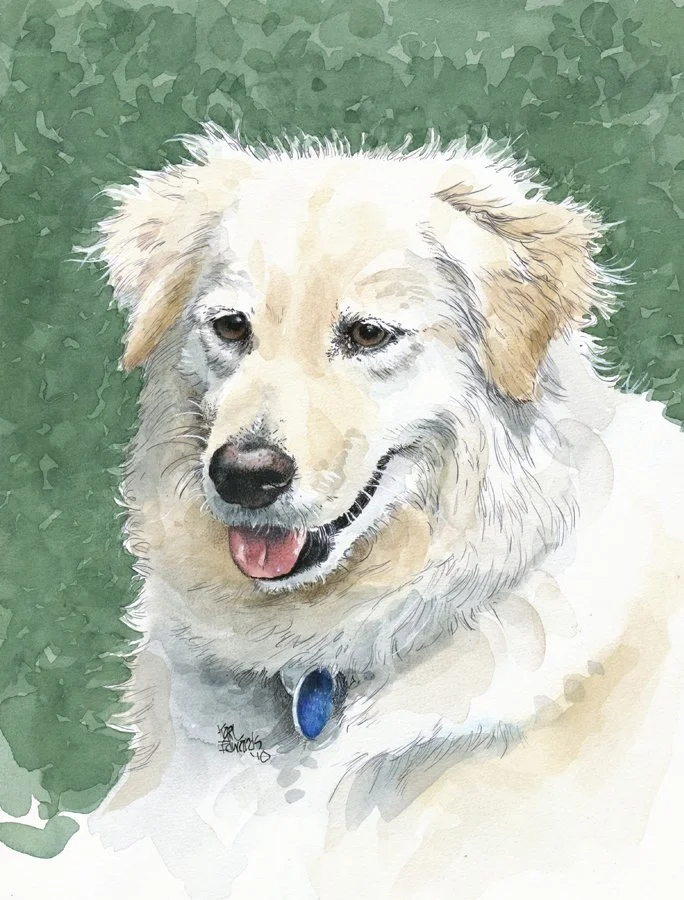
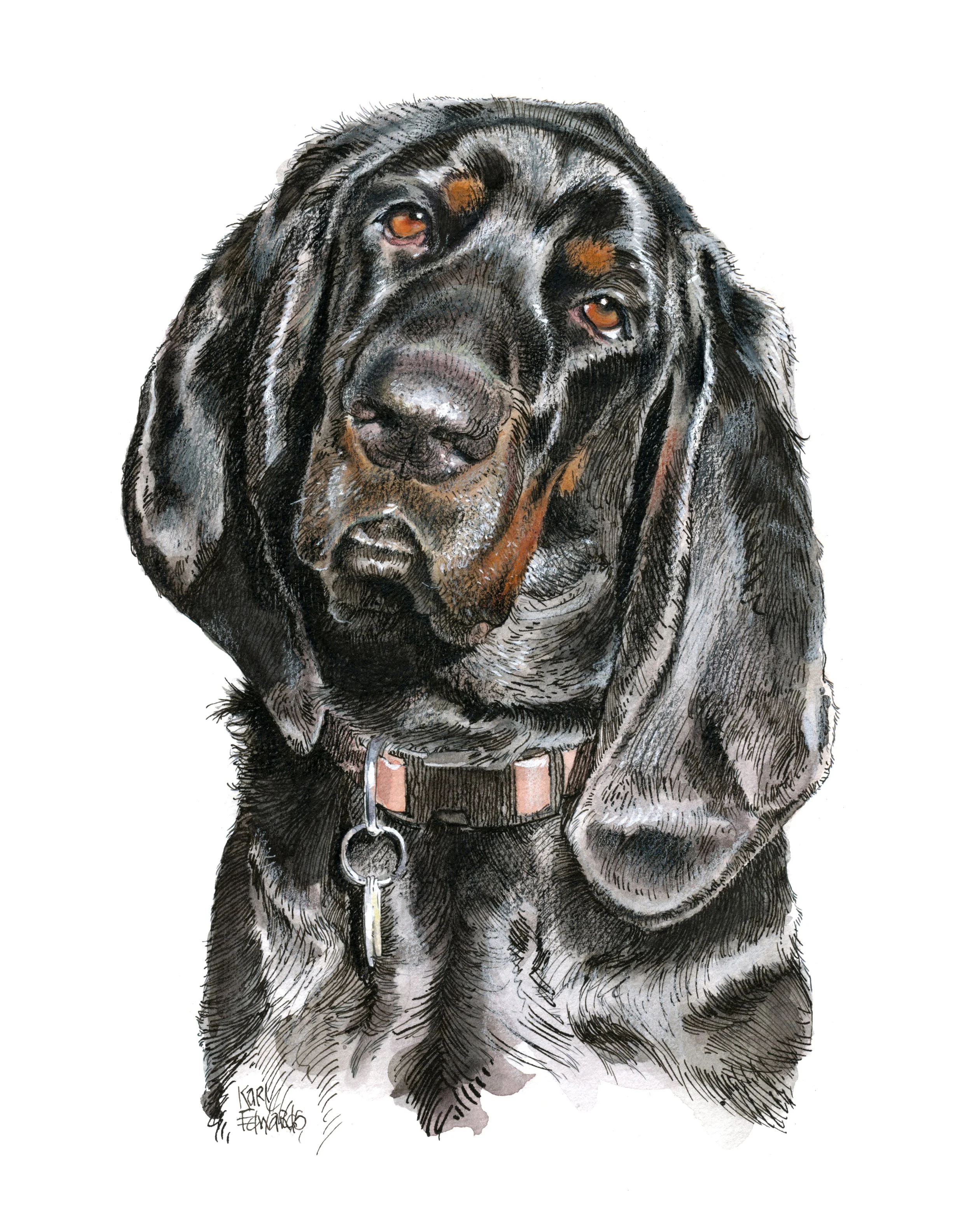
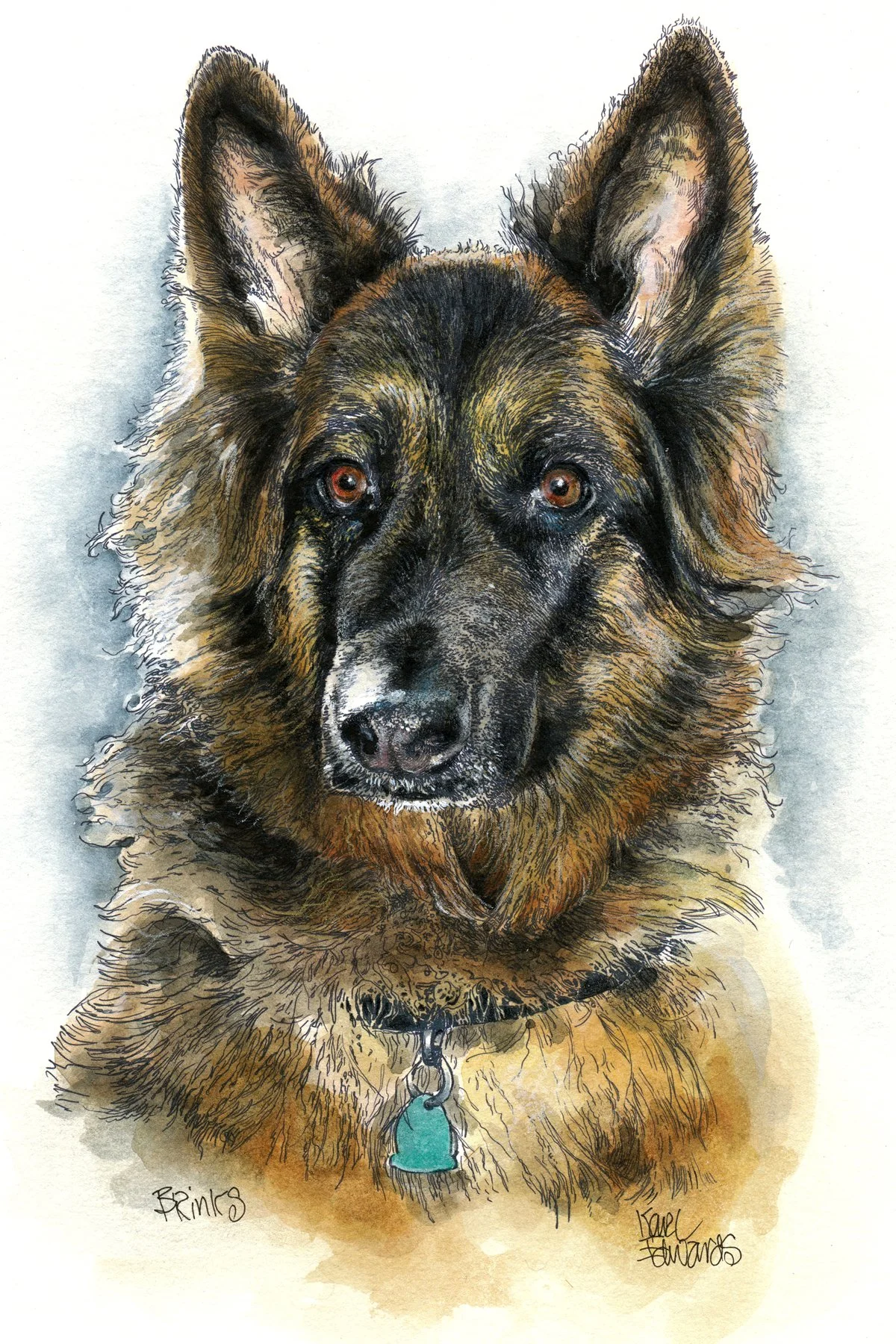



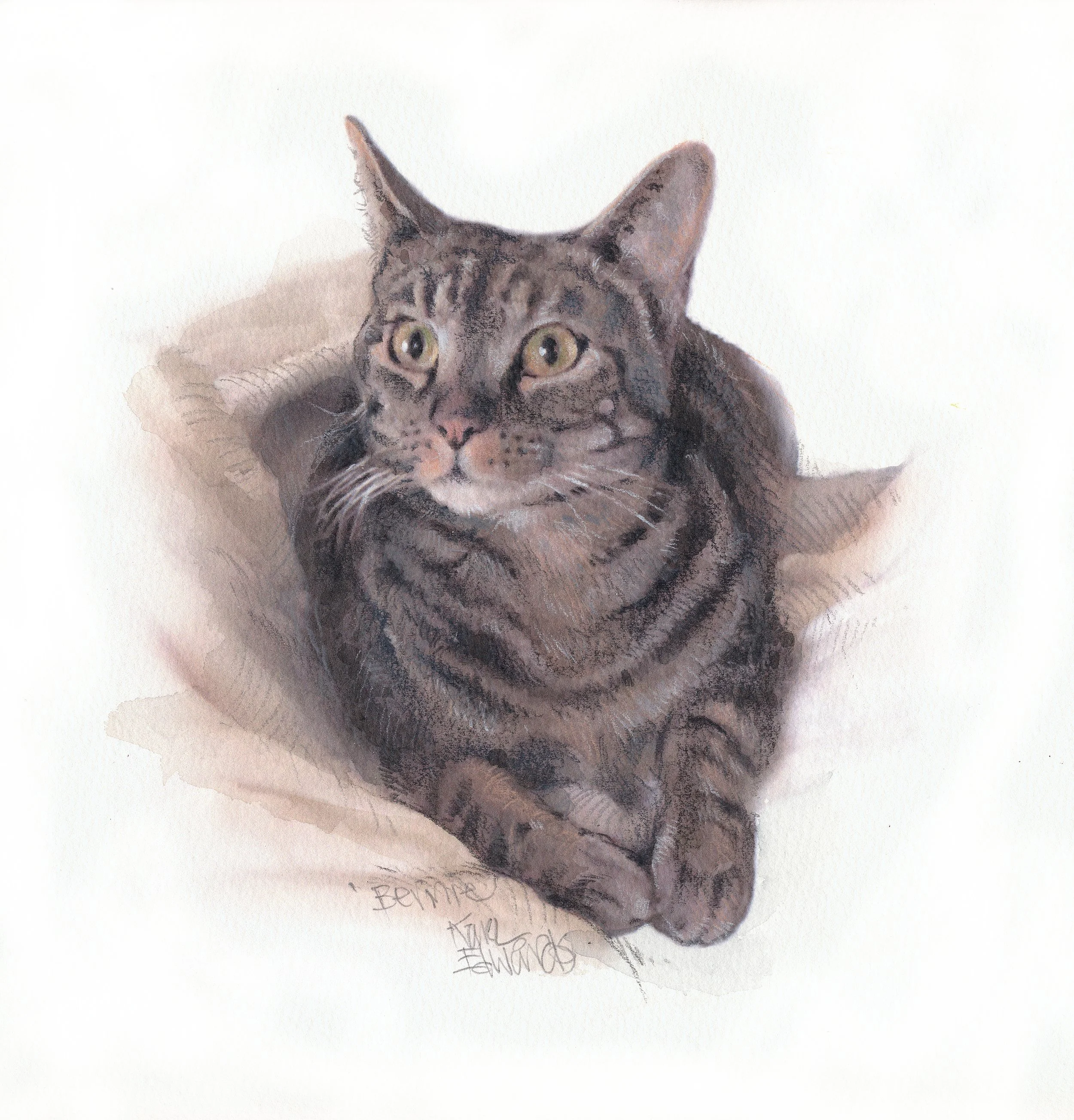

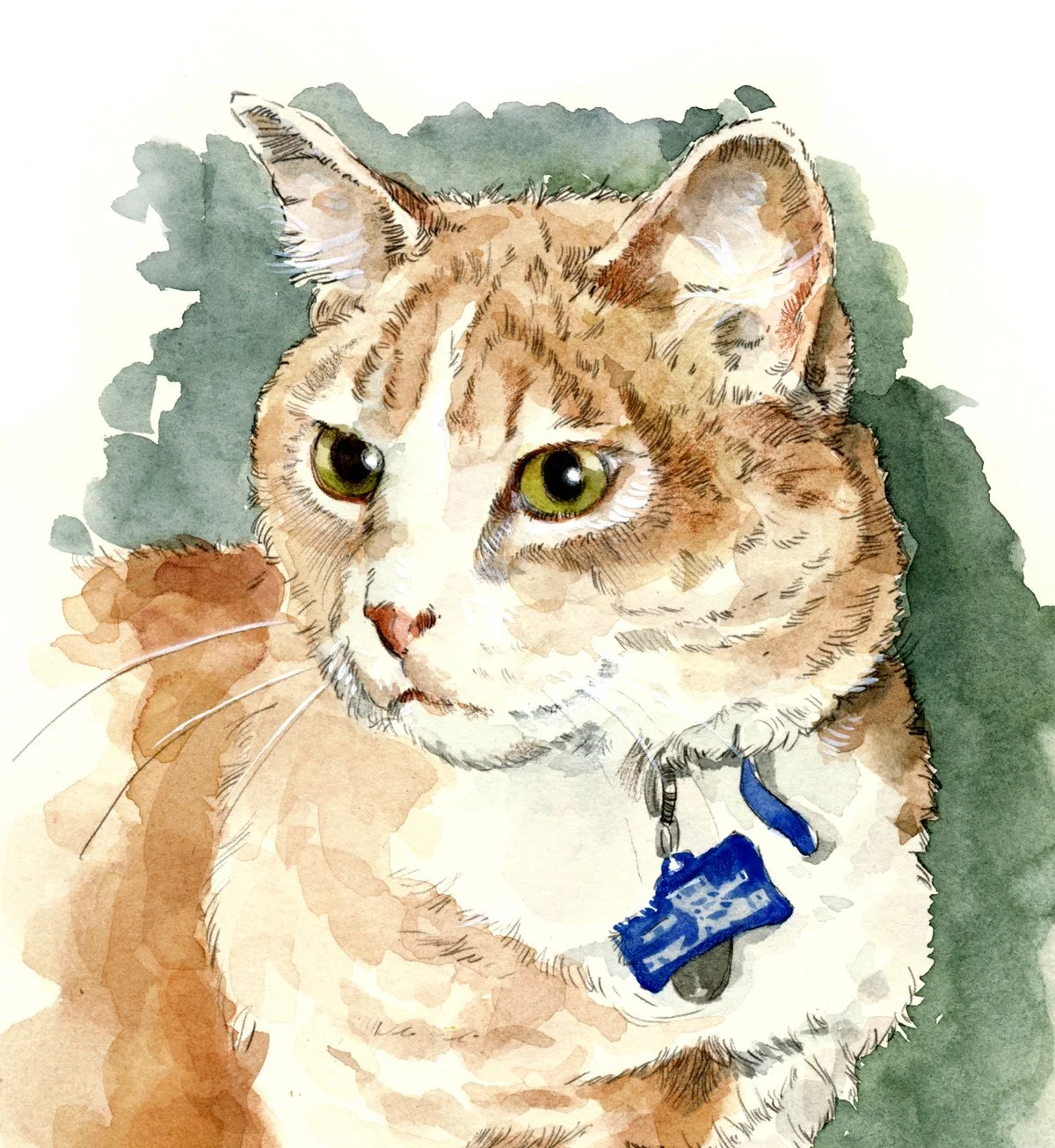


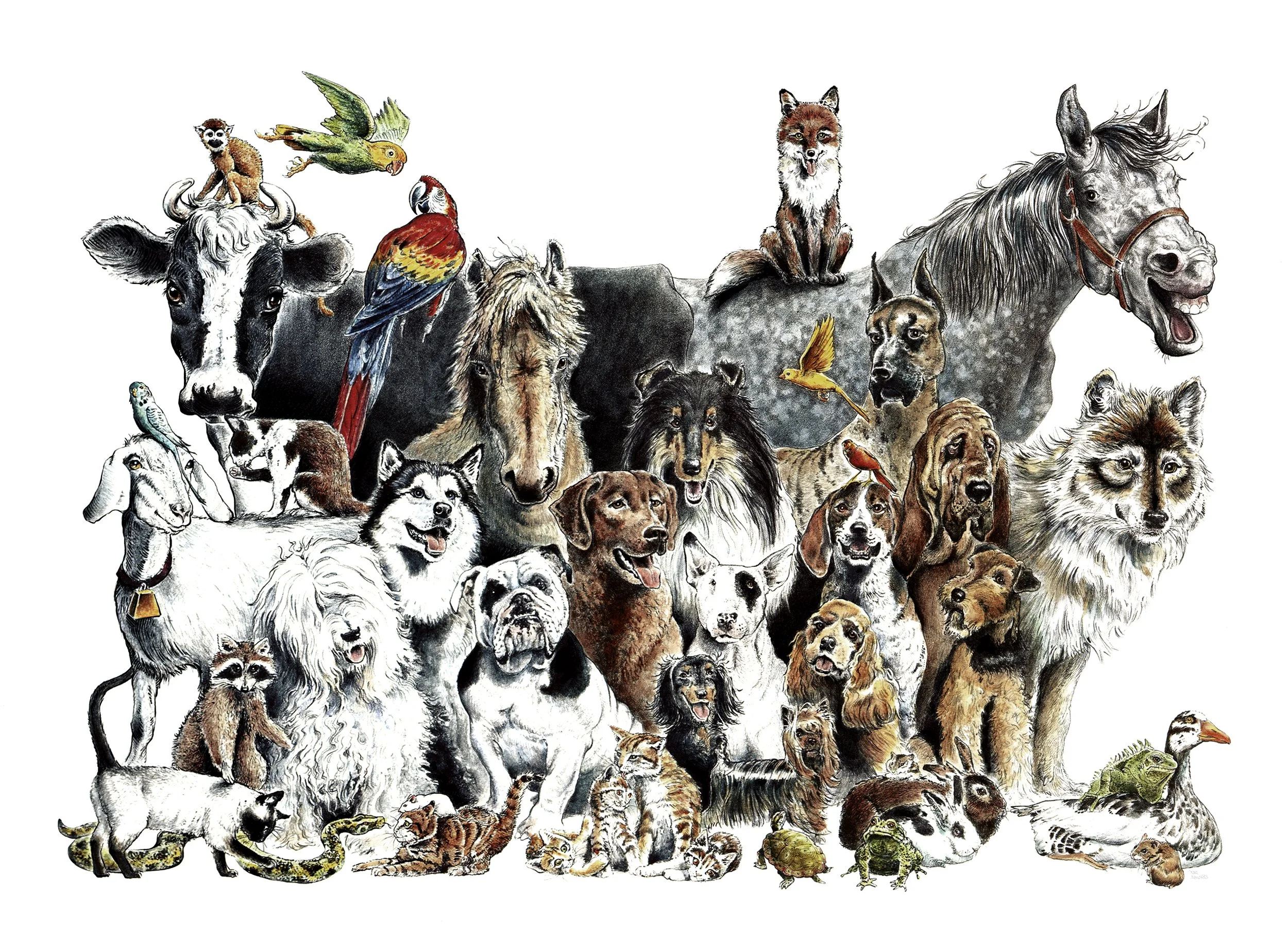


Pricing
Traditional watercolor on archival paper.
8 x 10” ………… $750
9 x 12”………… $950
11 x 14” ………… $1200
12 x 16” ………… $2000
The Best Way to “Shoot” Your Dog
I get a lot questions about the best way to shoot your dog. Photographs, that is. I’ve gathered together these tips to make the process easier. As part of my method to create a painting, I use snapshots as reference material.
Good photo reference like this are important.
I used these photos to create a composite pencil sketch.
The client asked for a few tweaks to the drawing, and then gave her approval.
I begin the painting.
And here is the result. Thanks to the great photos she provided. Riley’s owner is happy, and so am I.
It’s really easy to take good shots of your dog, if you keep these pointers in mind.
I. Take lots of Digital Photos
Use a cell phone or a digital camera. Move all the way around the dog, hold the camera at the dog’s eye-level, and take photos of the front, back and profile from a variety of angles. If there are specific details unique to the dog, take a lot of extra photos that concentrate on that part of the dog’s body or face.
II. Have a Helper Hold the Dog
The job is a lot easier with a helper to hold the dog. Of course, the helper’s hands and dog leashes won’t wind up in the painting. The reason for a helper is to prevent the dog from walking up to me. To get good shots, I need some distance between me and the dog.
III. File Sizes: The Bigger the Better
• Frequently, I receive photos that are simply too small to be useful.
• Don’t reduce the files. Keep the files big.
• When possible, shoot photos outdoors in full shade or under overcast skies, so the light is uniform, and doesn’t cast heavy shadows that can hide the features of your dog’s face.
• Make funny sounds to get your dog to perk up his ears, tilt his head, and do things that are visually interesting.
• Get your dog’s attention, and capture reactions.
It Takes a Dialogue to Paint a Successful Dog Portrait
That dialogue is between me and the dog owner. Whether it’s additional information about the dog’s personality or constructive criticism of preliminary sketches I provide for the client to review, it’s all very important.
Although I was trained as a fine artist, I’ve made my living for almost 35 years as a freelance illustrator, listening, taking directions and instructions from art directors. I think like an illustrator, in that I try to solve the visual problem and at the same time satisfy the wants and needs of the client. In the case of dog portraits, the goal is to capture the unique essence of a particular dog.
Brinks is a long-haired German shepherd I recently painted. Brinks’ owner gave me permission to reprint her emails to demonstrate the paramount importance of our dialogue throughout the process to achieve the most successful portrait.
I will do this post chronologically, beginning with a bit of history about Brinks. Her owner Barbara wrote,
Brinks is a long-haired German shepherd. She came from a breeder in Canada and we drove up to get her. She is beautiful, and smart! Her face is so expressive and her muzzle shows the colors well. She is unique in her almost all black coloring.
Our dog Brinks is suffering from degenerative mylopothy and is losing her ability to walk. It’s so heartbreaking!
Brinks is a bit frustrated that she can’t move around without her “walkin wheels”, but when she gets them on she goes! She can go for long walks and play in the yard and be outside, so they are a great tool. She drags her left foot all the time now, but we keep her walking to use it as much as possible. She wears a little doggy hiking boot to protect her toes!
She’s very smart and looks right at you when you are speaking. I think she understands English!
I like the good start to the sketch.
Yes, for the tags. She’s always had them.
You’ve really begun to capture her general characteristics, but I think her forehead and nose are broader and her eyes a bit further apart.
I love the longer hair and curly ends. That’s just how she looks. She’s had a big ruff and very long hair coat.
Somehow her expression seems a bit too “cute” to me.
She’s a pretty serious dog and makes focused eye contact when you talk with her. Her eyebrows tend to come together like she’s listening and thinking rather than to go up. I’ve attached another snapshot of Brinks in the snow. Her face here has a more pensive look, but has something to it that conveys her personality. It might help you get at what you are working on I think.
Ears look great – big and attentive. I love the intelligence in her eyes.
I love the longer hair and curly ends. That’s just how she looks. She’s had a big ruff and very long hair coat.
Somehow her expression seems a bit too “cute” to me.
She’s a pretty serious dog and makes focused eye contact when you talk with her. Her eyebrows tend to come together like she’s listening and thinking rather than to go up. I’ve attached another snapshot of Brinks in the snow. Her face here has a more pensive look, but has something to it that conveys her personality. It might help you get at what you are working on I think.
Ears look great – big and attentive. I love the intelligence in her eyes.
Oh, my gosh! You really got her! I am so pleased and so grateful that you kept us working on it! She looks terrific and it looks just like her now. The other image was lovely, but younger and more generic. This version’s terrific!
The portrait arrived today and it is amazing. Thanks so much.

